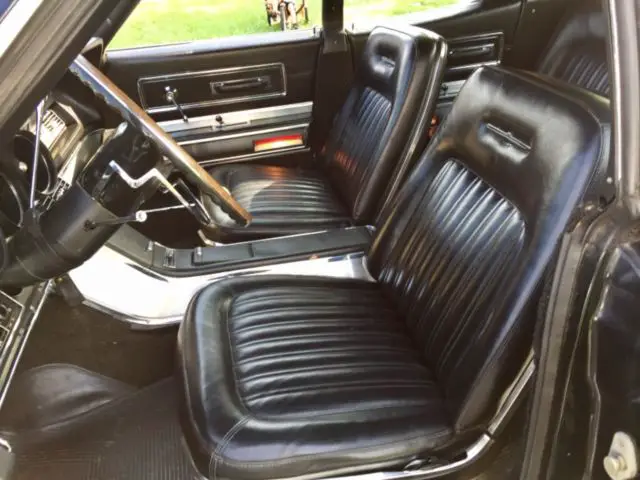

Ford decided to abandon the Thunderbird's typical unibody construction for this larger car, turning to a body-on-frame method with sophisticated rubber mountings between the two to improve noise/vibration characteristics and reduce weight by a small margin. History 1968 Ford Thunderbird interiorįor 1967 the Thunderbird would be a larger car, moving it closer to Lincoln as the company chose to emphasize the " luxury" part of the "personal luxury car" designation. They would share commonality again later from 1984–1998. In fact, for 1969 the Continental Mark III was launched as a two-door only personal luxury coupé, that was based directly on the four-door, 117 in (2.97 m) wheelbase Thunderbird chassis, and from that point until the end of 1976, Ford Thunderbirds and Continental Marks were related cars. The debut of the Ford Mustang in early 1964, and subsequent introduction of the larger, more upmarket Mercury Cougar, to compete with the similarly larger Dodge Charger – Chrysler's more upscale answer to Ford and G.M.'s pony cars – began to erode the Thunderbird sales and drove it to still get larger, with Ford even introducing four-door Thunderbird Landaus. The Thunderbird had fundamentally remained the same in concept through 1966, although the design had been revised twice. This fifth generation saw the second major change of direction for the Thunderbird. engine boosting the power output by 20 bhp to an impressive 360bhp.The fifth generation Ford Thunderbird is a large personal luxury car series, produced by Ford for the 1967–1971 model years. A second 4-barrel carburetor could be added to the top 425 cu. While the 1964 Riviera saw very few body and interior changes, the engine generated the real excitement.Įngine options included the 401 V8 producing 325bhp 4400rpm, the 425 V8 generating 340bhp, and the 425 V8. The 401 engine, with a single 4-barrel carburetor, produced 325 horsepower and 445 ft-lbs. The engine’s valves were tiny (resembling large nails, and thus the name) for an engine of its size but aided in producing plenty of low-end power. The ’63 Riviera base engine was the 401 cubic-inch Nailhead. While the first-generation Riviera models were considered by most to be luxury automobiles, they were equipped with some impressive powerplants.īuick's first-generation V8, the "Nailhead," instantly recognizable by its vertical valve covers, was produced in several displacements (264, 322, 364, 401, and 425). Many buyers ordered these basic features as well as the optional AM/FM radio, cruise control, air conditioning, power door locks, and automatic trunk release.īuick also offered wire-wheel covers, 15"圆" finned alloy wheels and the popular whitewall tires (rarely seen on today’s cars) as additional options. Typical, even for luxury cars of the era, the upholstery was vinyl, cloth combined with vinyl, or the optional leather/vinyl.Īlthough the first generation Rivieras were two-door coupé models, Buick mounted two sets of handles on each of the large doors, one within reach of the rear passengers for opening.īuick kept the price down on the basic Riviera by making accessories such as power seats, power windows, and tilt steering wheel optional.

The interior design mimicked that of the Thunderbird with bucket seats both front and back, center console, and floor-mounted shifter. Buick mounted the headlamps in the grill to maintain the car's sharp profile. The new Buick Riviera introduced in 1962 (for the ’63 model year) featured unique styling, including a low-profile roofline, rear-slanted nose, and wide roof pillars.


 0 kommentar(er)
0 kommentar(er)
